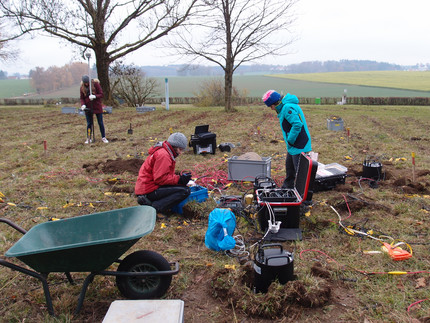New seismological instruments in the field
Eva P. S. Eibl
This project investigates the performance of newly developed rotational sensors in the field. We do measurements in Germany but also in volcanically active regions such as Iceland or Mount Etna. We are amongst the first ones to test them in the field in different environments.
Seismometers measure the motion in east-west, north-south and up-down direction. We use recently developed rotational sensors that also measure the rotation around the east-west, north-south and up-down axes. Since earthquakes move the ground in a complex way both rotational sensors and seismometers are needed to measure the exact ground motion. Since rotational sensors are new, we test them in the field for example with multiple sensors quite close to each other to investigate whether they all record the same signals.
We also recorded trains, helicopters, and wind turbines. However, our main focus is on seismological signals in volcanically or geothermally active regions in Europe. These include but are not limited to volcano-seismic signals on Mount Etna in Italy, the eruption signals of Strokkur geyser in Iceland, and the volcano- seismic signals before and during the eruption on the Reykjanes peninsula in 2021 in Iceland. Students can join us in the field if we install or deinstall these sensors. However, they can also just join the analysis of the datasets during a Bachelor thesis, Master thesis or PhD thesis.
An example for an active field experiment with support from the University Potsdam is the GIOTTO project.

